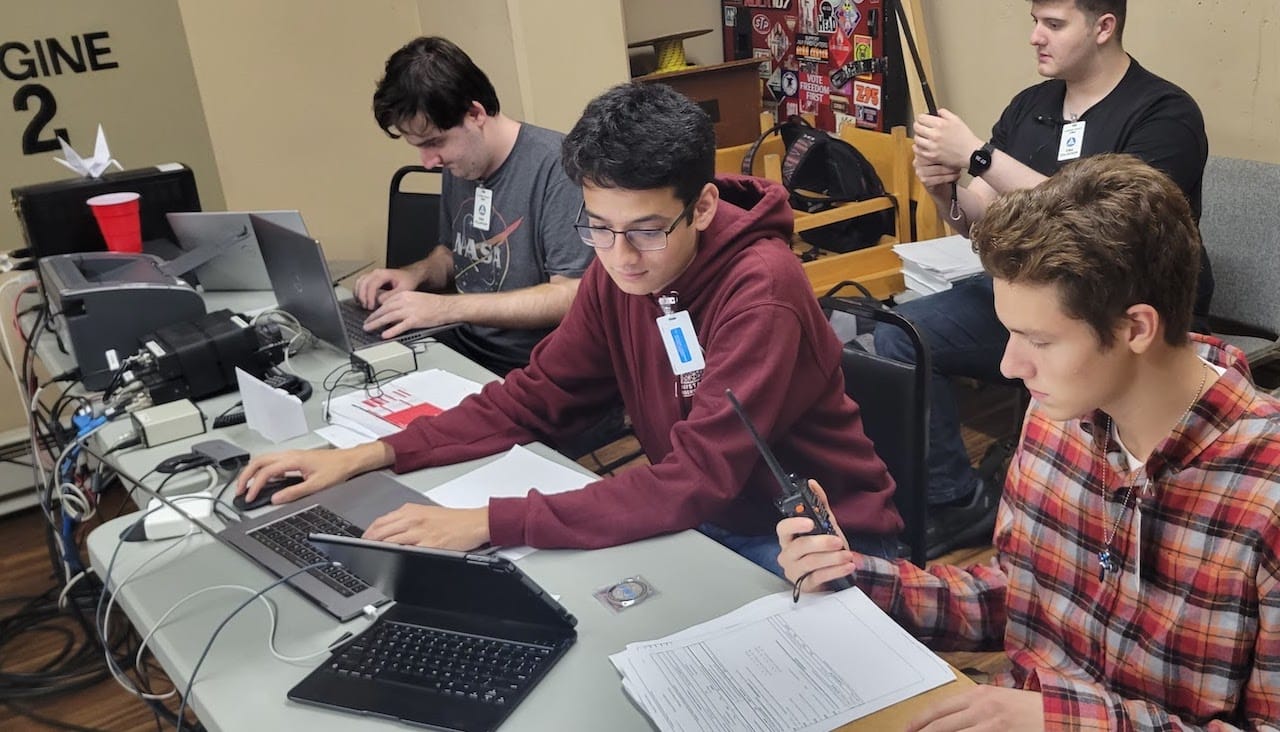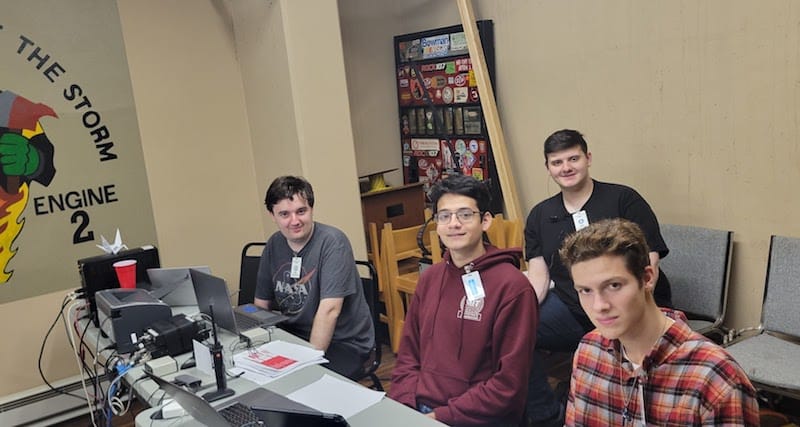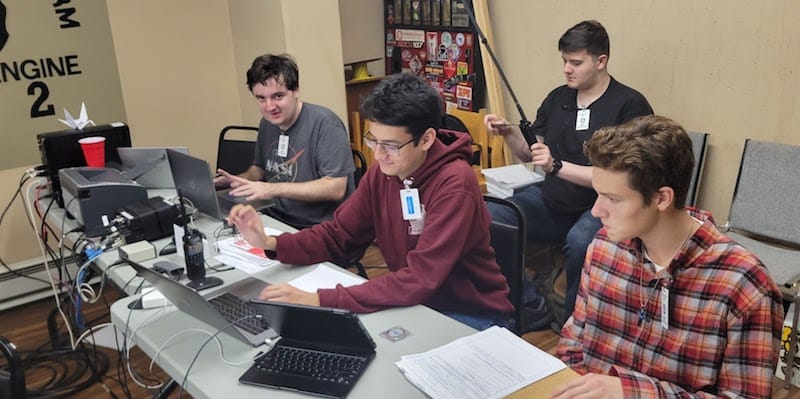Students Learn Firsthand About Emergency Preparedness

Four University of Scranton students participated in an emergency management drill in Luzerne County for the Susquehanna Steam Electric Station. The students are all members of W3USR: The University of Scranton Amateur Radio Club, pursuing majors offered through the Department of Physics and Engineering and the Computing Sciences Department.
“The students were participating in the drill as members Luzerne County Amateur Radio Emergency Services at the City of Nanticoke Emergency Operations Center (EOC). … An important part of the EOC is communications between the Municipal and County EOC,” said Dave Skoniecki, an emergency preparedness coordinator for Susquehanna Steam Electric Station, explaining that each municipal EOC provides a back-up means of communication in case the primary communication channel becomes unavailable. “The Luzerne County Amateur Radio Emergency Services plays an important role in these drills and exercises and we greatly appreciate the participation of The University of Scranton students in the community.”
The Amateur Radio Emergency Service (ARES) consists of trained radio amateurs who provide public service communications support. Trained amateur radio operators serve communities when storms or other disasters damage critical communication infrastructure, including cell towers, and wired and wireless networks. Amateur radio can function completely independently of the internet and phone systems. An amateur radio station can be set up almost anywhere in minutes.
University students who participated were: James P. (JP) Fox, Hillsborough, New Jersey, a computer science major in his senior year at Scranton; Gerard N. Piccini, Monroe Township, New Jersey, an electrical engineering major in his junior year; Thomas J. Pisano, Staten Island, New York, an electrical engineering major in his junior year; and Stephen Salamon, Wayne, New Jersey, a mechanical engineering major in his freshman year at Scranton.
Nathaniel Frissell, Ph.D., assistant professor physics and electrical engineering, serves as moderator for W3USR: The University of Scranton Amateur Radio Club.
Undergraduate programs offered through the University’s Physics and Engineering Department are biophysics, computer engineering, electrical engineering, engineering management, mechanical engineering, physics and pre-engineering.
The Department of Computing Sciences provides undergraduate and graduate programs in the computing sciences, including bachelor’s degrees in computer science, applied computing and information technology, and a master’s degree in software engineering.








